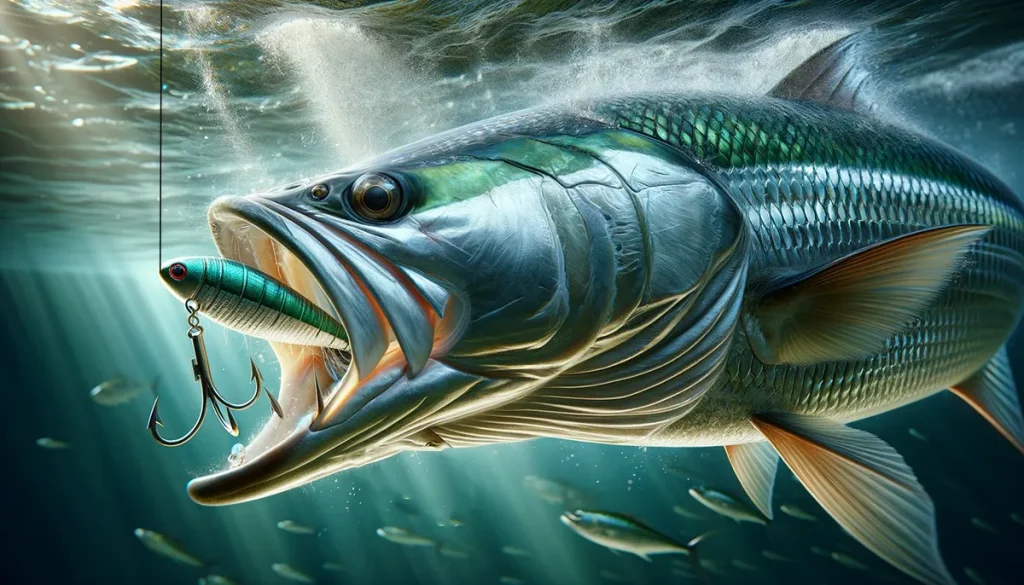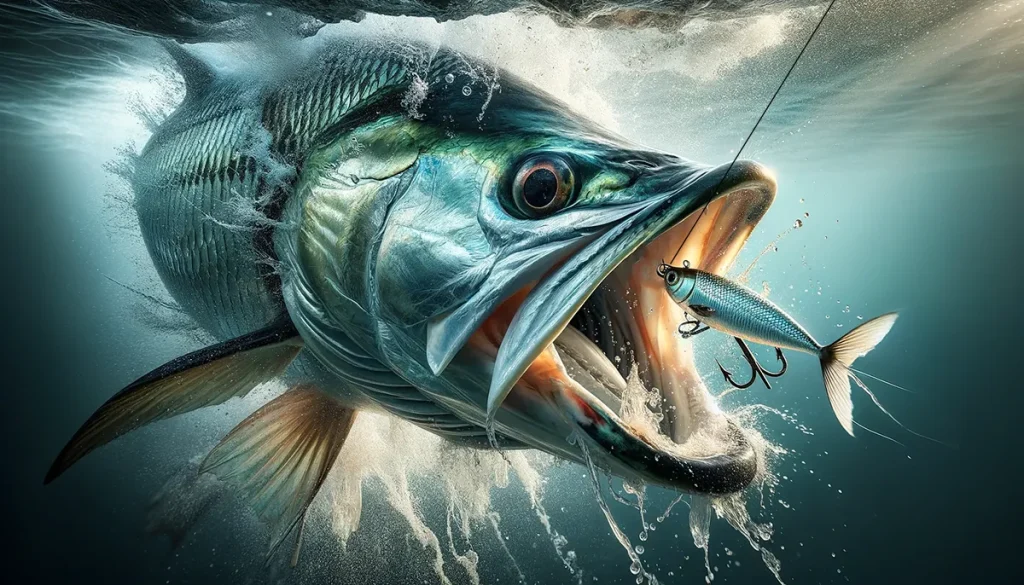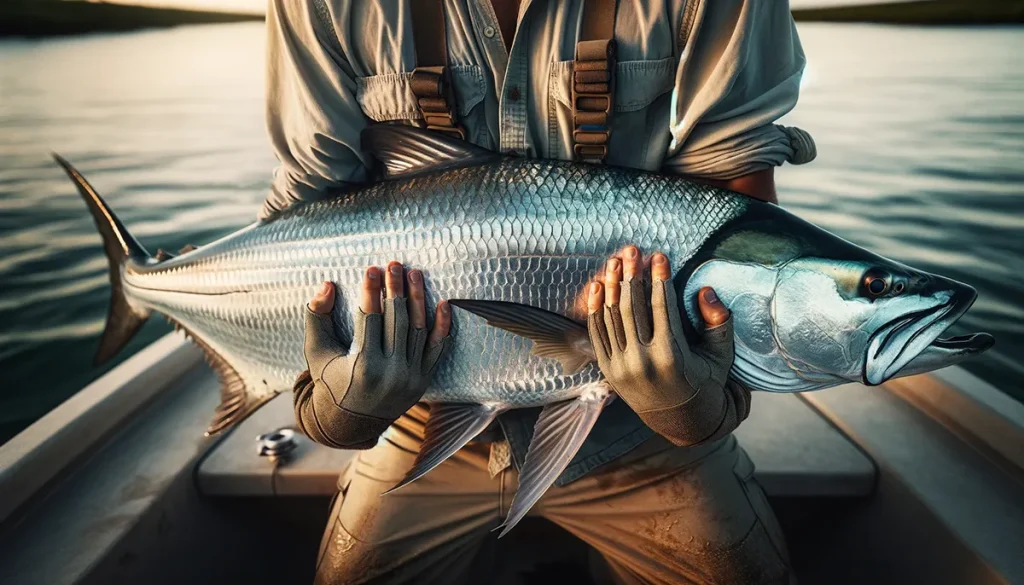G’day, mates! Welcome to the ripper world of tarpon fishing down under. If you’ve ever dreamt of tangling with the mighty Silver King in our stunning saltwater habitats, you’re in the right spot. Tarpon fishing in Australia isn’t just about casting a line; it’s an adventure that tests your skill, patience, and gear to the limits. These beauties are known for their aerial acrobatics and sheer power, making catching tarpon a thrilling challenge that’s second to none.
Now, whether you’re just starting out or looking to level up your game, our mission is to help you transition from a novice to a pro at catching tarpon. And let’s not forget, that having top-notch gear is part of the equation. That’s where our ReelBoss fishing lines come into play. Designed for the harsh Aussie saltwater conditions, they’re perfect for the job. Check ’em out at ReelBoss, and you’ll see what I mean. So, are you ready to dive into the exciting world of tarpon fishing? Let’s get cracking and turn those tarpon dreams into epic catches!

Understanding Tarpon in Australian Waters
Diving into the sparkling saltwater habitats of Australia, you’ll find the elusive tarpon, a fish that’s as mysterious as it is thrilling to catch. These silver leviathans love the warm, shallow waters, often lurking around estuaries, mangroves, and river mouths. It’s in these spots that tarpon fishing turns from a pastime into a passion for many Aussie anglers.
Understanding the tarpon’s behavior is key to your success. These critters are most active during the warmer months, making timing everything. Knowing when and where to find them can mean the difference between a story about the one that got away and the catch of a lifetime.
So, whether you’re casting off the coast of Queensland or exploring the Northern Territory’s remote waterways, remember that the best tarpon fishing adventures are had when you’ve done your homework. Get to know their haunts and habits, and you’ll be well on your way to mastering the art of catching the mighty tarpon in Aussie saltwater.
Gear Up for Success
Now, onto the nitty-gritty of gearing up. For a top-notch tarpon fishing adventure, picking the right light tackle is as crucial as finding the perfect fishing spot. Why go light, you ask? Well, it’s all about the thrill of the fight, mate. Light tackle makes the battle with these silver giants not just a test of strength, but a test of skill, finesse, and patience.
But don’t be fooled, choosing light tackle doesn’t mean you’re undergunned. It means matching the right rod with the right flexibility and tip strength to keep those tarpons on the line without snapping them. A rod that’s too stiff might not give you the play you need for a spirited tarpon, while one that’s too flexible could rob you of the control you need to guide the fish. So, when you’re kitting out for your next tarpon fishing trip, think light tackle for the most thrilling and rewarding experience. It’s all about balance, and getting it right will set you up for success on the water.

Mastering the Techniques
Righto, you’ve got your gear sorted; now it’s time to master the techniques that’ll have you catching tarpon like a pro. First up, let’s chat about how to throw the hook. This isn’t about chucking it into the water willy-nilly; it’s the art of setting the hook in just the right way to make sure that when you do get a bite, that cheeky tarpon isn’t going anywhere. It’s all in the wrist – a sharp, firm flick to set the hook securely in its mouth.
Next, keeping that rod tip high is your best bet for maintaining tension and control when you’ve got a tarpon on the line. This technique keeps the line tight, reducing the chance for the fish to throw the hook and bid you farewell. It’s a balancing act; too much tension and you could snap the line, too little and the tarpon could slip the hook. So, keep that rod tip up and stay alert. With these tricks up your sleeve, you’ll be well on your way to catching tarpon with the best of ’em.
Strategies for Tarpon Fishing
Alright, you’re getting the hang of this! Now, let’s dive into some strategies that’ll make your tarpon fishing adventures even more epic. When it comes to saltwater tarpon fishing, timing, and tides can make a huge difference. These silver battlers love moving with the tide, so getting your timing right, especially during the early morning or late afternoon, can be a game-changer.
Another hot tip? Keep it quiet. Tarpons are sharp and can get spooked easily. Stealth is your best friend here. Approach your fishing spots with care, keep noise to a minimum, and watch for signs of tarpon rolling at the surface.
Now, let’s talk light tackle. Using light tackle in tarpon fishing isn’t just about the thrill; it’s about matching your gear to the challenge. Light tackle allows for a more finesse-driven approach, giving you the sensitivity to feel the tarpon’s movements and the agility to respond quickly. Plus, it makes the fight with a tarpon more of a fair dinkum duel, testing your skills to the max.
Remember, saltwater tarpon fishing is as much about strategy as it is about strength. Use these tips, keep your wits about you, and you’re sure to have a tale or two for the pub after a day on the water.
The Fight: Bringing In Your Catch
Now, you’ve hooked a mighty tarpon, and the real test begins – the fight. This is where the adrenaline kicks in, and every bit of your fishing know-how is put to the test. First off, remember that rod tip control is critical. Keep it high to maintain the tension on the line, preventing the tarpon from taking too much slack and throwing the hook. This dance of give and take is where the thrill of catching tarpon lies.
As you’re battling, that throw-the-hook technique you’ve mastered comes into play. A well-set hook minimizes the chance of the tarpon shaking free. But, here’s the thing – fighting a tarpon is a marathon, not a sprint. Patience and persistence are your best mates during this tussle. The tarpon will leap, dive, and run, trying every trick in the book to shake loose.
This fight could go on for a while, so keep your cool. Adjust your rod tip as needed, reel in when you can, and let the fish run when it has to. It’s this back-and-forth that makes catching tarpon such a rewarding challenge. Stick with it, stay patient, and soon enough, you’ll be bringing in your catch, ready for that victorious photo. Remember, in the world of tarpon fishing, it’s not just about the catch; it’s about the memorable fight that got you there.

Catch and Release: Ethics and Techniques
Alright, you’ve had the fight of your life and you’ve managed to reel in that beautiful tarpon. What comes next is just as important as the catch itself – the release. Ethical tarpon fishing practices are crucial, not just for the sport but for the health of our saltwater ecosystems. These magnificent fish are a vital part of the marine environment, and it’s up to us to ensure they keep thriving.
When it comes to releasing your catch, handling the tarpon with care is paramount. Always support the fish in the water, allowing it to regain its strength. It’s a bit like giving it a breather after the intense tussle you’ve both endured. Avoid taking the tarpon out of the water if you can; the less stress on the fish, the better.
Use a dehooking tool to safely remove the hook, minimizing harm. If the tarpon seems a bit sluggish, gently move it back and forth in the water to help water flow through its gills. Watch for that moment when it’s ready to kick off strongly – that’s when you know it’s good to go.
Remember, the practice of catch and release in tarpon fishing isn’t just about ethics; it’s about respect for these incredible creatures and the saltwater habitats they call home. By following these practices, we ensure future generations can enjoy the thrill of tarpon fishing just as much as we do.
Conclusion
And there you have it, mate – your journey from a novice to a pro in tarpon fishing. From understanding the elusive tarpon in our stunning saltwater habitats, gearing up with the right tackle, and mastering the art of the hook and fight, to the respectful release of these magnificent creatures, it’s been quite the adventure. You’ve learned not just the techniques but the ethics that make tarpon fishing an unforgettable and sustainable experience.
As we wrap up, I want to remind you of the importance of respecting both the saltwater environment and the incredible species that call it home. Our actions today ensure that future generations can enjoy the thrill of tarpon fishing just as we do. So, take what you’ve learned, apply it with respect, and who knows? Maybe you’ll inspire another novice to start their journey to becoming a pro.
Remember, every cast is a story, and every release is a promise to the future. Happy fishing, and here’s to many successful releases!
